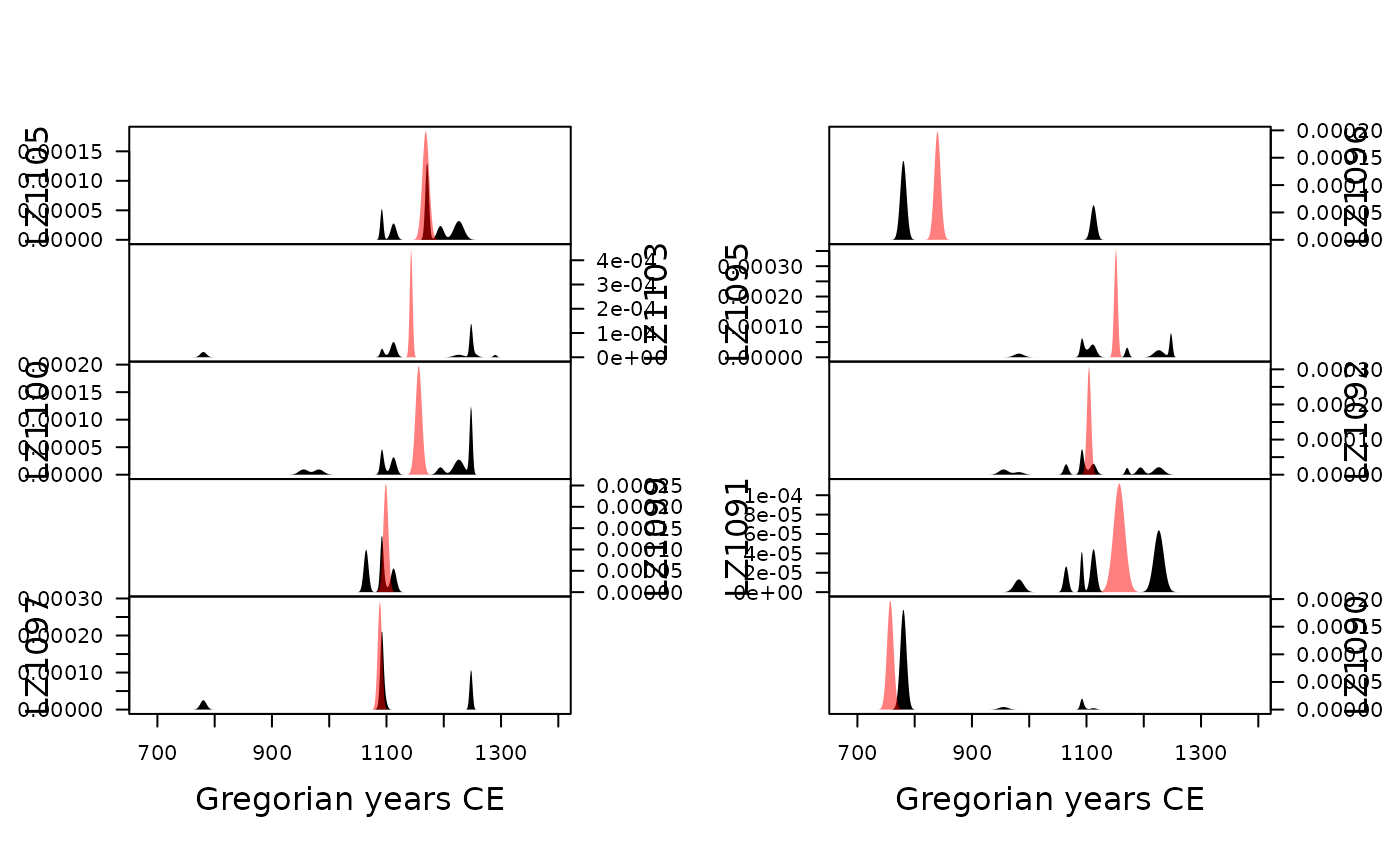coef()extracts model coefficients (seestats::coef()).fitted()extracts model fitted values (seestats::fitted()).residuals()extracts model residuals (seestats::residuals()).sigma()extracts the residual standard deviation (seestats::sigma()).terms()extracts model terms (seestats::terms()).
Usage
# S4 method for class 'EventDate'
coef(object, calendar = NULL, ...)
# S4 method for class 'EventDate'
fitted(object, calendar = NULL, ...)
# S4 method for class 'EventDate'
residuals(object, calendar = NULL, ...)
# S4 method for class 'EventDate'
sigma(object, calendar = NULL, ...)
# S4 method for class 'EventDate'
terms(x, ...)Arguments
- calendar
An
aion::TimeScaleobject specifying the target calendar (seecalendar()). IfNULL(the default), rata die are returned.- ...
Currently not used.
- x, object
An
EventDateobject.
See also
Other mutators:
data.frame,
mutators,
series(),
subset()
Examples
## Data from Peeples and Schachner 2012
data("zuni", package = "folio")
## Assume that some assemblages are reliably dated (this is NOT a real example)
zuni_dates <- c(
LZ0569 = 1097, LZ0279 = 1119, CS16 = 1328, LZ0066 = 1111,
LZ0852 = 1216, LZ1209 = 1251, CS144 = 1262, LZ0563 = 1206,
LZ0329 = 1076, LZ0005Q = 859, LZ0322 = 1109, LZ0067 = 863,
LZ0578 = 1180, LZ0227 = 1104, LZ0610 = 1074
)
## Model the event and accumulation date for each assemblage
model <- event(zuni, zuni_dates, rank = 10)
plot(model, select = 1:10, event = TRUE, flip = TRUE)

